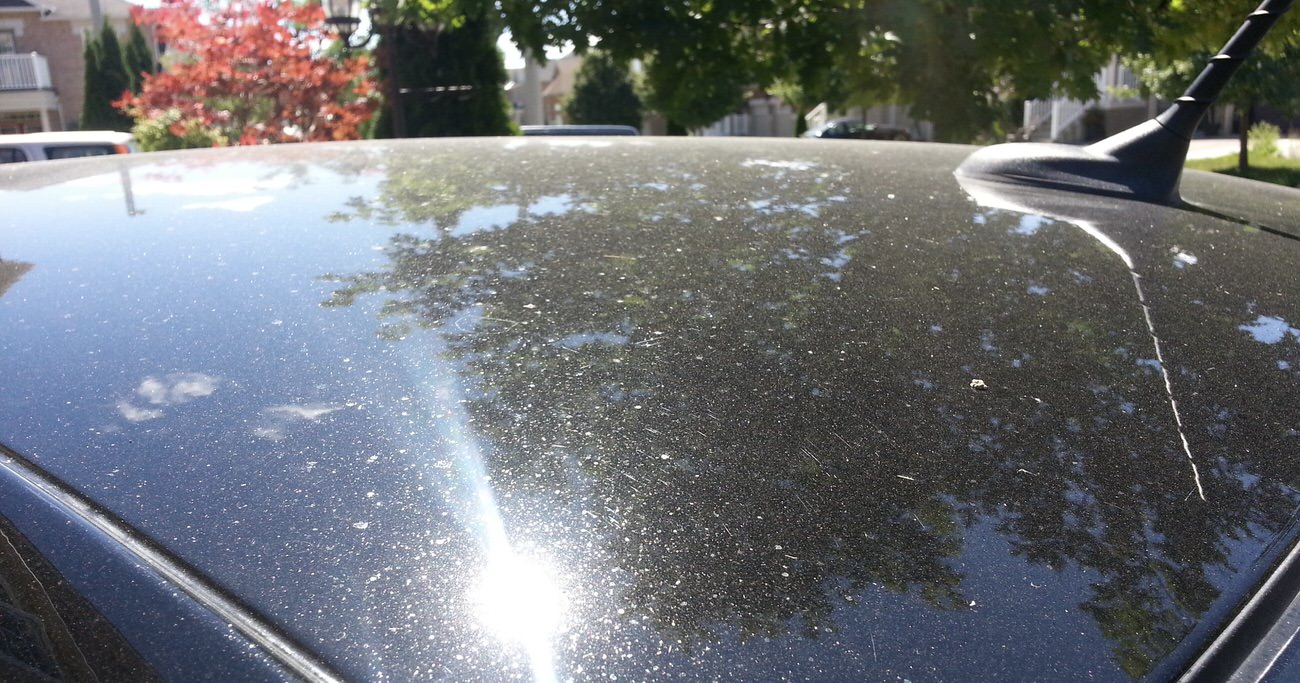How To Prevent Tree Sap On Car Windshield

Tree sap. It’s the sticky bane of every car owner's existence, especially during spring and summer. While seemingly harmless, tree sap can etch into your car's paint, damage the clear coat, and make your windshield a blurry mess, compromising visibility and safety. This article will explore the science behind tree sap, its potential damage, and – most importantly – provide actionable strategies to prevent it from ruining your car's windshield and overall finish.
Understanding the Enemy: What is Tree Sap?
Tree sap is essentially the lifeblood of a tree, a complex mixture of sugars, water, minerals, and other organic compounds. Different tree species produce different types of sap, varying in viscosity, color, and composition. The stickiness is due to the high sugar content, which attracts dirt, pollen, and other environmental contaminants. This creates a stubborn residue that is difficult to remove. Some saps even contain acids that can slowly corrode your car's finish. Furthermore, sunlight can bake the sap onto the surface, making it even harder to remove and potentially leading to permanent damage. Certain trees, like pine, oak, and maple, are notorious for producing copious amounts of sap.
The Impact of Tree Sap on Your Windshield and Paint
Beyond the immediate annoyance of a sticky windshield, tree sap poses several long-term threats:
- Reduced Visibility: A sap-covered windshield obstructs your view, especially when the sun is low. This creates a dangerous driving situation.
- Etching and Staining: Over time, the acids and sugars in the sap can etch into the glass of your windshield, leaving permanent stains that are impossible to remove with regular cleaning.
- Paint Damage: While this article focuses on windshields, it's crucial to remember that sap also damages paint. It can eat through the clear coat, leading to fading, cracking, and eventually, rust.
- Attracts More Debris: The sticky surface attracts dirt, dust, pollen, and even insects, compounding the problem and creating a larger, harder-to-clean mess.
Preventative Measures: Shielding Your Car from Sap Attacks
The best defense against tree sap is prevention. Here are some strategies to minimize your car's exposure:
- Park Strategically: This is the most obvious, but often overlooked, solution. Avoid parking directly under trees, especially those known to drip sap. Look for open areas or use covered parking whenever possible.
- Use a Car Cover: A high-quality car cover provides a physical barrier between your car and the environment. Choose a breathable cover that won't trap moisture and potentially cause other issues like mold growth. Consider a cover with a waterproof or water-resistant outer layer. Brands like Covercraft and Budge offer various options for different vehicle sizes and needs.
- Apply a Windshield Protectant: Products like Rain-X or similar windshield treatments create a hydrophobic layer on the glass, making it harder for sap to adhere and easier to remove. These products work by reducing the surface tension of the glass, causing water and other liquids to bead up and roll off. Reapply regularly according to the product's instructions.
- Wax Your Car Regularly: A good coat of wax provides a protective barrier for your car's paint, making it more difficult for sap to bond to the surface. Waxing every 2-3 months is recommended, especially during sap-heavy seasons. Consider using a high-quality carnauba wax for maximum protection.
Immediate Action: Removing Sap Before It Sets
Despite your best efforts, your car may still encounter tree sap. The key is to remove it as quickly as possible, before it has a chance to harden and bond to the surface. Here’s how:
- Wash Your Car Regularly: Frequent washing removes fresh sap before it has a chance to harden. Use a car-specific soap and a soft microfiber wash mitt to avoid scratching the paint or windshield.
- Use a Dedicated Sap Remover: Numerous products are specifically designed to dissolve tree sap. These often contain solvents that break down the sticky residue without damaging the paint or glass. Follow the product's instructions carefully. Brands like Goo Gone and Stoner Car Care offer effective sap removal products.
- Isopropyl Alcohol (IPA): In a pinch, isopropyl alcohol can be used to dissolve sap. Dilute it with water (a 1:1 ratio is generally safe) and test it in an inconspicuous area first to ensure it doesn't damage the paint. Use a soft cloth to gently wipe away the sap.
- Clay Bar Treatment: For stubborn sap residue, a clay bar can be effective. This involves using a special clay bar and lubricant to gently scrub away contaminants from the paint surface. Be sure to follow the instructions carefully to avoid scratching the paint.
Professional Help: When to Call in the Experts
If the sap has been left on your car for an extended period and has become deeply embedded, or if you're uncomfortable attempting to remove it yourself, consider seeking professional help. A reputable detailing shop will have the specialized tools, products, and expertise to safely remove the sap without damaging your car's finish. The cost of professional sap removal typically ranges from $50 to $200, depending on the severity of the problem and the size of the affected area.
By understanding the nature of tree sap and implementing these preventative and removal strategies, you can protect your car's windshield and paint from this sticky menace and maintain its value and appearance for years to come.
